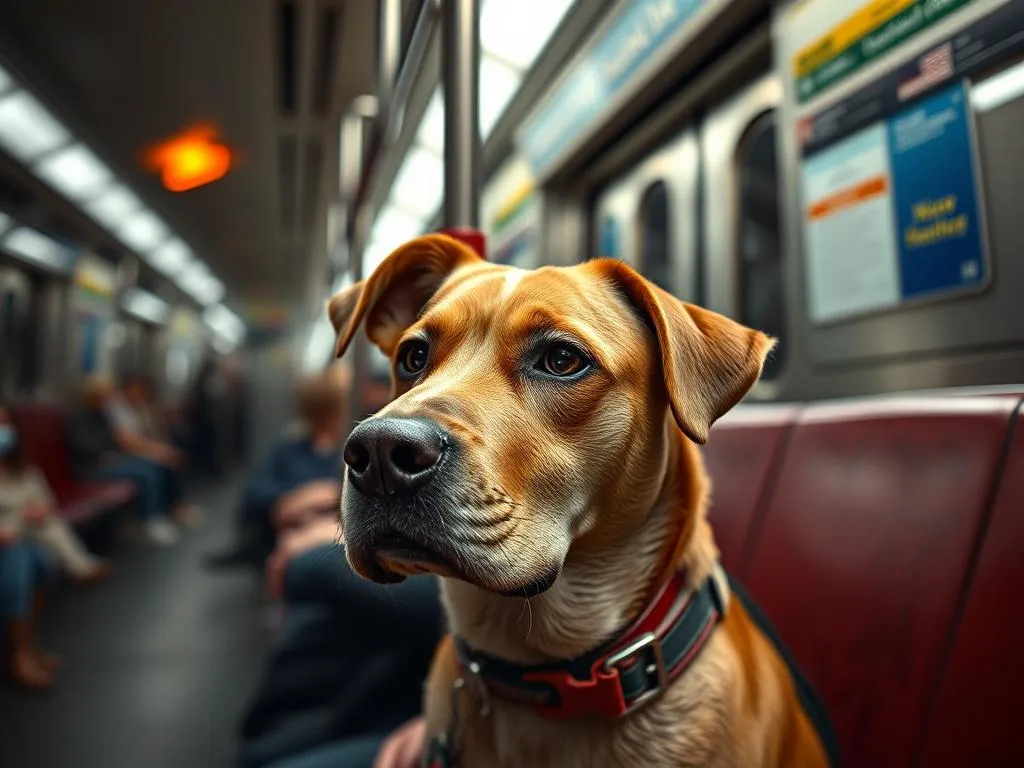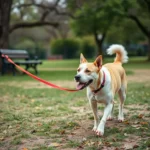
Navigating the bustling streets of New York City often leads to the iconic subway system, a vital part of daily life for millions. Established in 1904, the subway has evolved into an intricate network of lines and stations, facilitating convenient transport across the five boroughs. With over 5 million rides taken each day, it serves a diverse demographic, from busy professionals to tourists exploring the city. For dog owners, understanding the regulations regarding pets in this transportation system is essential.
NYC Subway Regulations on Dogs
When it comes to bringing your furry friend onto the subway, it’s crucial to be aware of the official rules and policies set by the Metropolitan Transportation Authority (MTA). According to MTA regulations, dogs are permitted on the subway, but certain conditions must be met.
Official Rules and Policies
- Containment Requirement: Dogs must be transported in a carrier. The carrier should be well-ventilated and comfortable for your pet. This rule exists to ensure the safety and comfort of all passengers, including those who may have allergies or phobias regarding dogs.
- Size Restrictions: While the MTA does not specify an exact size limit for dogs in carriers, it is generally understood that larger breeds may not fit comfortably. Assess your dog’s size and choose an appropriate carrier for smooth travels.
Exceptions to the Rules
There are exceptions to the general rules regarding dogs on the subway. Service animals are allowed to travel without a carrier, as they are trained to assist individuals with disabilities. These animals have rights under the Americans with Disabilities Act (ADA) and must be allowed to accompany their handlers at all times.
Additionally, emotional support animals may also be permitted, but their acceptance can vary. It’s advisable to check with MTA staff or look for any specific documentation that might be required for emotional support animals.
Consequences of Non-Compliance
Failing to adhere to the rules can lead to consequences such as potential fines. MTA staff are authorized to enforce regulations, and non-compliant passengers may face penalties. Common enforcement practices include verbal warnings and ticketing, so it is always best to follow the guidelines to avoid any unpleasant situations.
Preparing Your Dog for the Subway
To ensure a pleasant experience for both you and your dog, preparation is key. Training your dog and familiarizing them with subway travel can make all the difference.
Training Your Dog for Public Transport
Start by teaching your dog basic commands such as “sit,” “stay,” and “heel.” These commands will help keep your dog calm and in control, especially in crowded areas. Gradually introduce your dog to busy environments, like parks or busy streets, to help them acclimate to the sounds and sights they may encounter on the subway.
Choosing the Right Carrier
Selecting the right carrier is crucial for your dog’s comfort. Here are some considerations:
- Type of Carrier: Soft-sided carriers are generally recommended as they can be more comfortable for your pet and easier to store under your seat.
- Size: Ensure the carrier is spacious enough for your dog to stand, turn around, and lie down comfortably.
- Safety Features: Look for carriers with secure zippers and ventilation to ensure your dog’s safety and comfort.
Health and Safety Considerations
Before heading out, ensure your dog is healthy and up-to-date on vaccinations. Flea prevention is also essential, especially during warmer months when pests are more prevalent. Keep an eye on your dog for signs of stress, such as panting, whining, or excessive drooling. If you notice these behaviors, consider taking a break from the subway to help your dog relax.
Best Practices for Traveling with Dogs on the Subway
Once you’re prepared, it’s time to think about the actual subway ride. Following best practices can enhance the experience for both you and your dog.
Timing Your Trip
Try to avoid peak hours whenever possible. The subway is busiest during the morning and evening rush hours, which can be overwhelming for your dog. Ideal times for traveling with dogs are mid-morning or early afternoon when the crowd is thinner.
Conducting Yourself and Your Dog
Keeping your dog leashed and under control is crucial when on the subway. Be mindful of the space of other passengers, ensuring your dog does not invade their personal space. If your dog is smaller, consider placing the carrier on your lap instead of the ground to create more room for everyone.
Handling Emergencies
Emergencies can happen, so it’s essential to be prepared. If your dog becomes anxious or distressed, try to calm them by speaking softly and reassuringly. Familiarize yourself with subway stops and exits beforehand to know where to go if you need to exit the train quickly.
Alternative Transportation Options for Dog Owners
If the subway seems daunting for traveling with your dog, there are alternative transportation options available in NYC.
Dog-Friendly Taxis and Rideshare Services
Services like Uber and Lyft allow dogs, but it’s essential to check the specific policies of the driver before getting in. Always have a leash and carrier ready. Some drivers may prefer that your dog rides in a carrier, while others may be more flexible.
Public Buses and Ferries
Other forms of public transport, such as buses and ferries, often have different regulations regarding dogs. Generally, dogs are allowed on public buses as long as they are leashed and under control. Ferries also welcome dogs, and some even have designated areas for pets. These alternatives can sometimes offer a more relaxing experience than the subway.
Exploring NYC with Your Dog
New York City offers numerous dog-friendly parks and open areas near subway stops, perfect for letting your dog stretch its legs before or after a subway ride. Popular spots include:
- Central Park: A massive green space with designated dog parks.
- Prospect Park: Featuring off-leash areas where dogs can play freely.
- The High Line: A unique elevated park with dog-friendly paths.
Additionally, many cafes and restaurants in the city welcome dogs, especially those with outdoor seating. Be sure to check for dog-friendly establishments in your area.
Real-Life Experiences of Dog Owners in the NYC Subway
Hearing from fellow dog owners can provide valuable insights into traveling with pets on the subway.
Interviews and Anecdotes
Many dog owners have shared their experiences, ranging from joyful encounters to challenging situations. Some owners report that their dogs become accustomed to subway rides quickly, while others face hurdles related to anxiety or crowd aversion.
One dog owner recounted a positive experience where their dog made friends with fellow passengers, bringing smiles to everyone around. Conversely, another owner shared a tale of a frightened dog who needed to be calmed during a particularly crowded ride.
Tips from Experienced Subway Travelers
Experienced subway travelers recommend several tips:
- Practice Runs: Consider taking shorter subway trips during off-peak hours to help your dog get used to the experience.
- Bring Treats: Having treats on hand can help reward your dog for good behavior.
- Stay Calm: Dogs often pick up on their owner’s emotions, so remaining calm can help your dog feel more secure.
Conclusion
Understanding the regulations about whether dogs are allowed on the NYC subway is crucial for pet owners looking to navigate the city with their furry friends. From the rules set by the MTA to preparing your dog for the journey, every detail contributes to a smoother travel experience.
Being aware of alternative transport options and learning from the experiences of fellow dog owners can further enhance your adventures in the city. As always, stay informed about any changes in regulations and continue to share your experiences to foster a community of pet-friendly practices in NYC.








